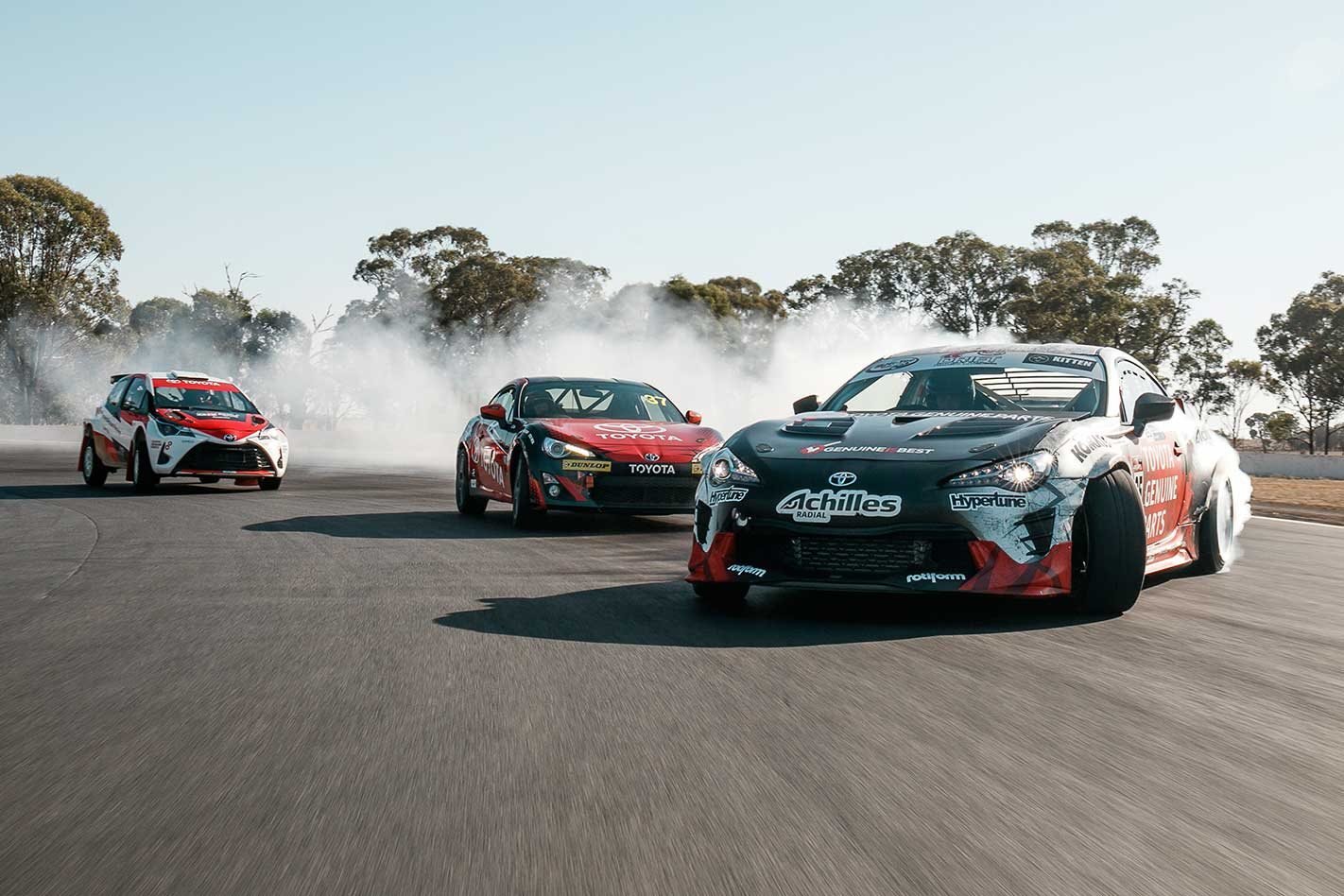This feature seemed destined not to happen. The idea of celebrating Toyota Australia’s support of local motorsport by driving the machines it backs was ambitious to begin with; no-one was more surprised than us when Toyota agreed to the concept.
Weeks of planning to line up a date amongst car rebuilds and deadlines appeared in vain when, at the eleventh hour, the intended venue declined our hire request due to noise concerns and every other venue in NSW was unavailable.
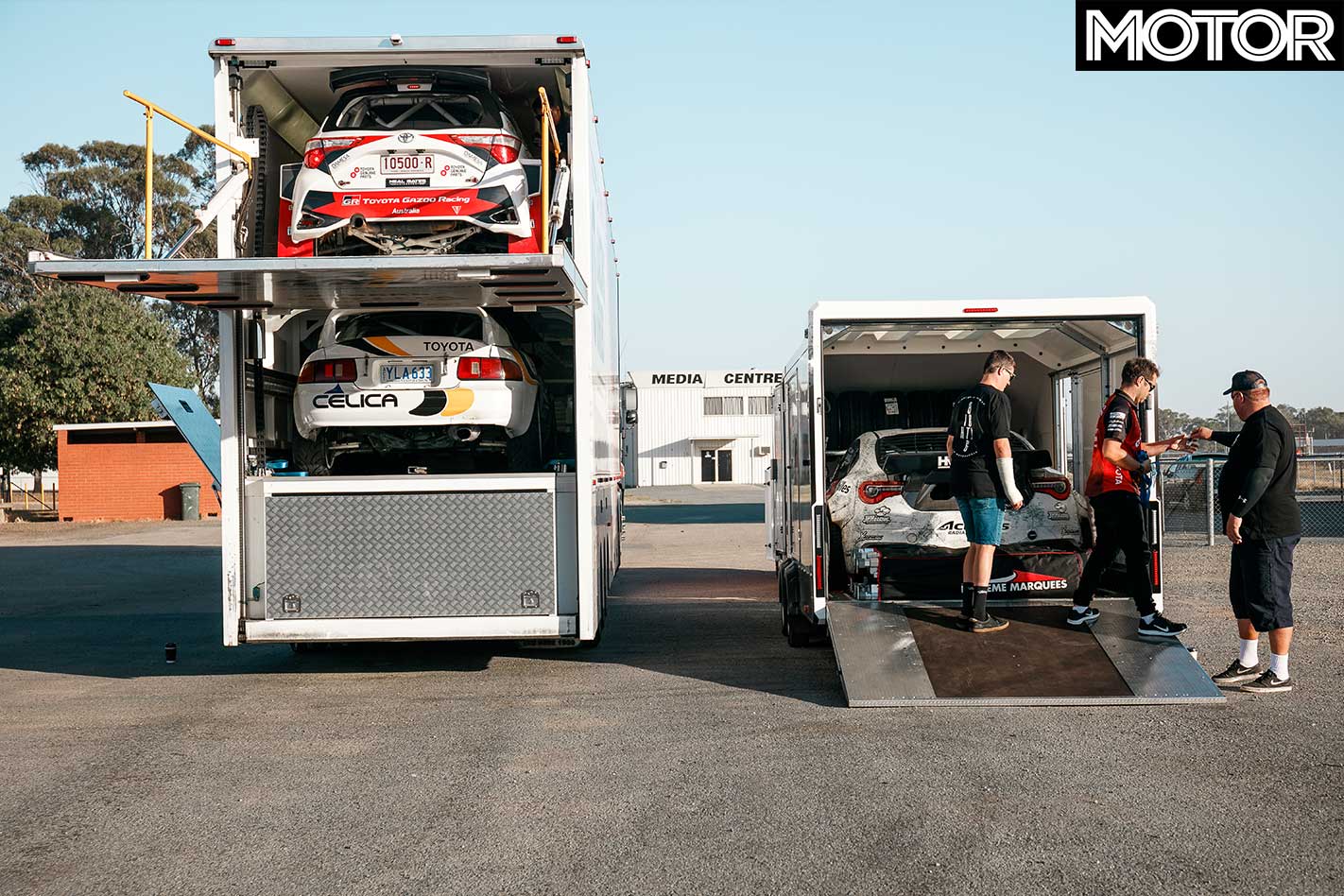
Winton Raceway came to the rescue and thanks to the amazing generosity of the people involved a trio of racing cars, covering the disciplines of circuit, rally and drifting, sit in pitlane idling impatiently. Not as impatiently, it must be said, as editor DC and myself, both of whom are giddy with excitement, yet incredibly nervous at being trusted with driving unfamiliar and very expensive machinery hard enough to put you, the reader, in the driver’s seat. Yeah, I know, cue the violins.
Few car companies boast a more impressive sporting resume than Toyota: the diminutive Sports 800; the gorgeous 2000GT; the long-lived Celica, which morphed from rear-drive coupe to all-wheel drive rally weapon to front-drive screamer during its lifespan; the Supra, Chaser and Soarer, JZ-powered darlings of the Japanese tuning industry; the MR2, an affordable exotic; the AE86, Japan’s answer to the Mk II Escort, the list goes on.
Then there are its motorsport efforts. Twenty-five years in world rally, including two world titles, a decade in F1, a dozen Le Mans campaigns, British Touring Cars, IndyCar, off-road racing and NASCAR all appear on the CV. This incredible CV only made Toyota’s hermit crab-like post-GFC withdrawal from anything remotely exciting even more disappointing.
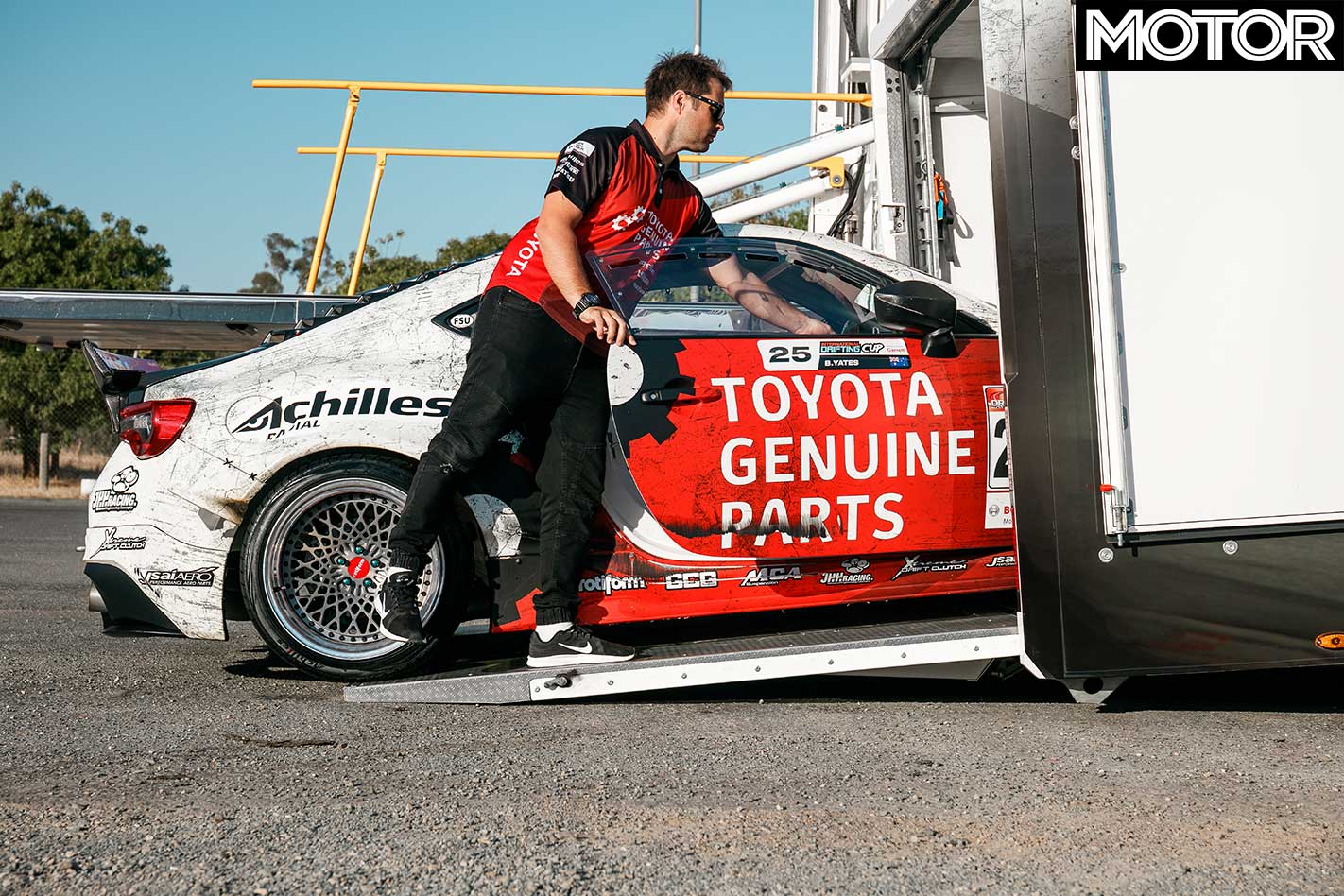
Toyota President Akio Toyoda provided the spark needed to reignite the flame. Promoted to head of the company in 2009, he greenlit the 86 sports car program and vowed “no more boring cars” at the 2014 Detroit Auto Show, where Toyota unveiled the FT-1 Concept which would (eventually) morph into the new Supra.
Since then, the Camry and Corolla have become interesting to look at and decent to drive, the Yaris spawned a (sadly Euro-only) hot hatch and Toyota re-entered global motorsport, finally securing Dakar and Le Mans victories and creating its front-running Yaris World Rally Car.
Closer to home, enthusiasm at Toyota Australia was clearly hibernating, not dead, for in recent years it has been a strong supporter of local motorsport. It launched the successful one-make 86 Racing Series, providing an entry into tin-top competition for budding young racers. Now in its fourth year, it regularly attracts fields of 40 cars or more.
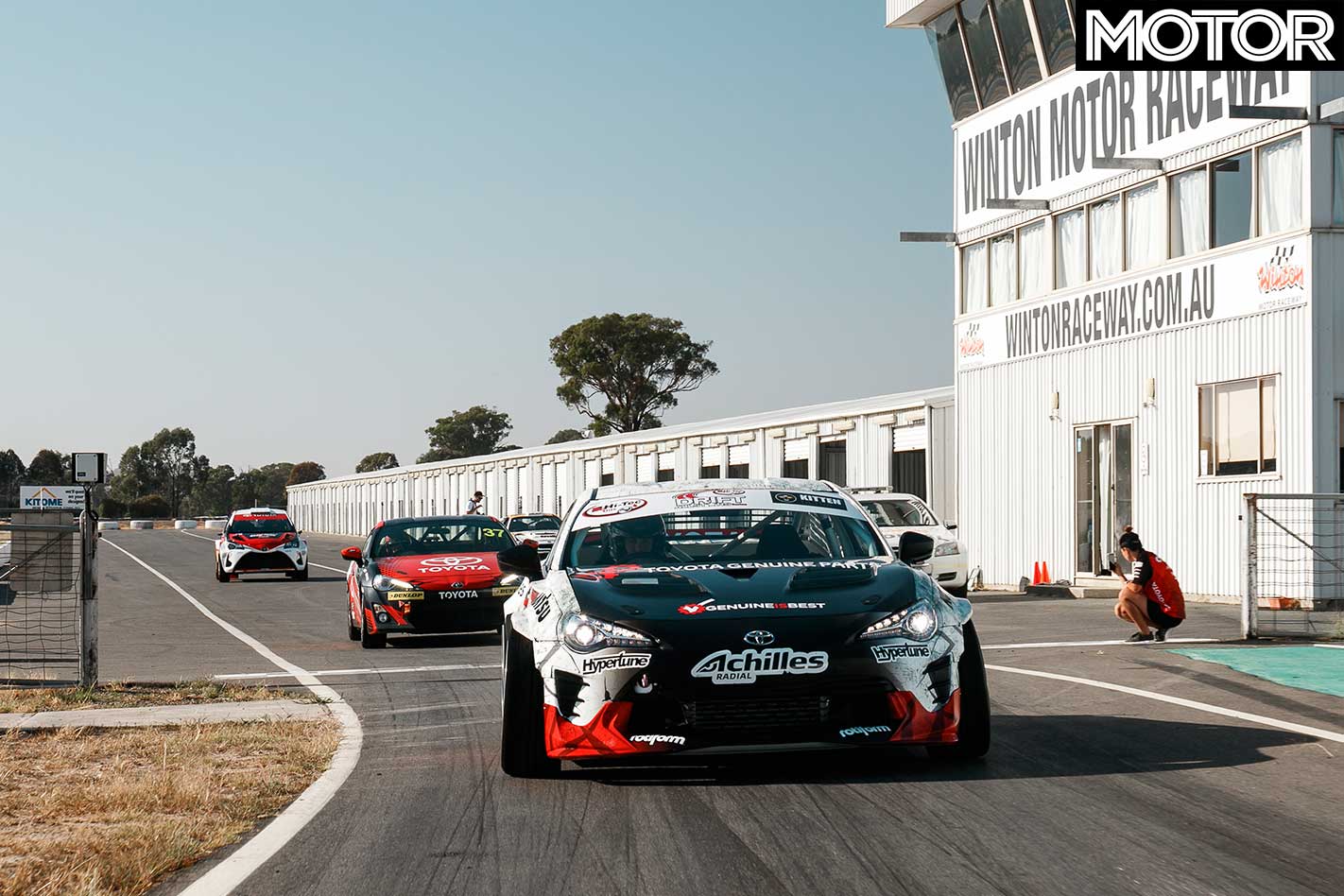
The Toyota 86 racer was developed by Neal Bates Motorsport, a name with a long and successful association with Toyota. Having won four Australian Rally Championships as a driver, Neal Bates is now team principal of Gazoo Racing Australia as Toyota embarks on its first factory rally effort in a decade, with a pair of Yaris AP4s to be driven by Neal’s sons, Harry and Lewis.
But if anyone has more Toyota passion running through their veins than the Bates family, it’s Beau Yates. If you examined his blood under a microscope, his cells would be little Toyota logos. In 2006, Yates became Toyota Australia’s first drift ambassador driving his iconic AE86 Sprinter.
Following a huge accident in 2013 he switched to the new 86, which has morphed over the years into a screaming circa-600kW beast that eats semi-slicks like the Cookie Monster downs Oreos. To simply experience these cars would be a huge privilege, to be allowed behind the wheel an incredible honour. Let’s go for a drive.
Read our review of Beau Yates’ Toyota 86 Drift car here
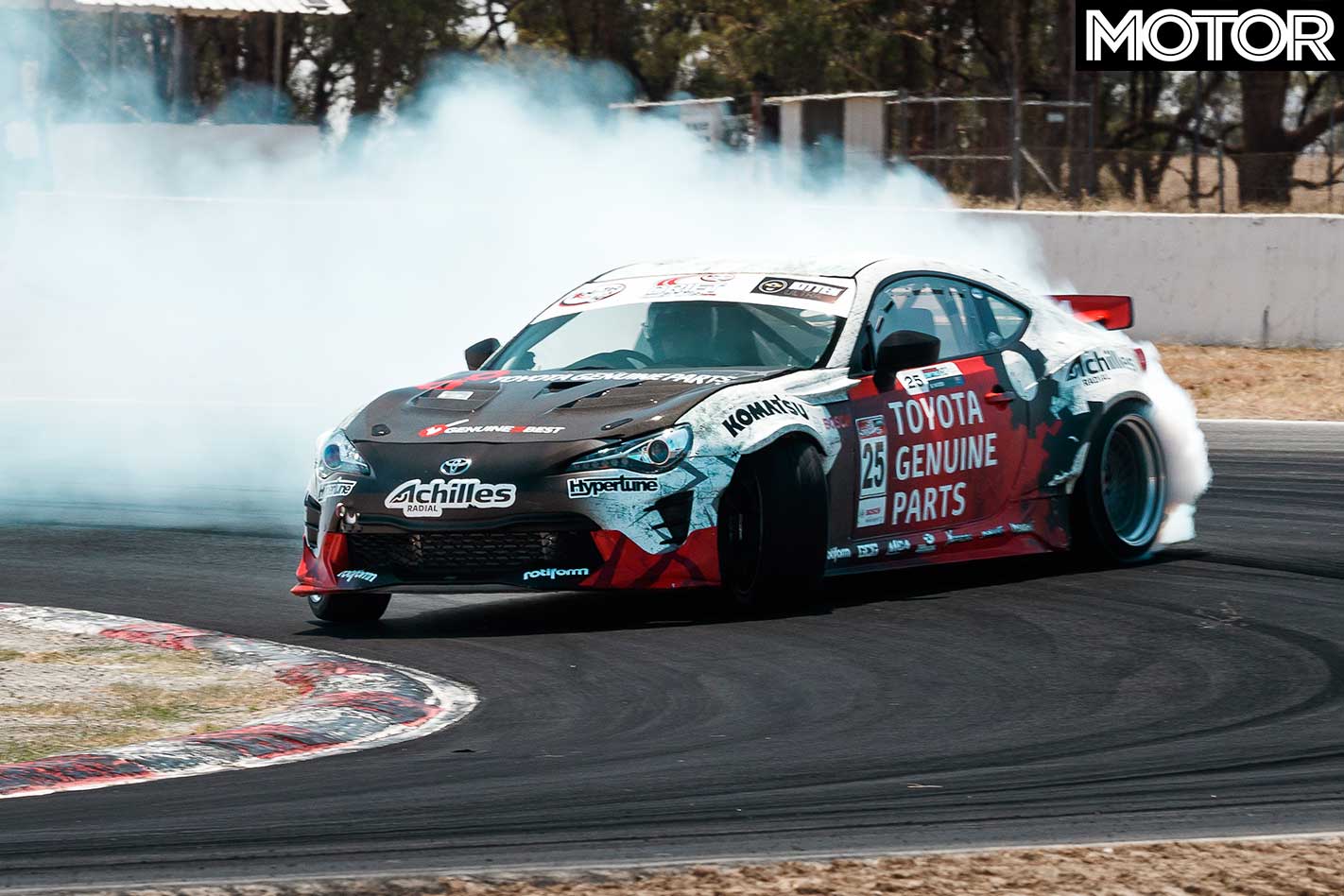
Read our review of the Toyota 86 Racing Series race car here

Read our review of the Toyota Yaris AP4 rally car here

Toyota Australia’s motorsport involvement

The smiles you see in these photos aren’t put on, they’re genuine emotion; Dylan’s being banging on about wanting to try a proper drift car since I’ve met him and I’ve had rallying in my blood since I learned how to spell WRC. But what have we gleaned from this exercise, other than having a hell of a lot of fun?
Firstly, no production car can deliver the excitement of a purpose-built competition car. Even the likes of the 911 GT3 RS or GT-R Nismo can’t match the sense of connection offered by a machine that’s sole purpose is to help its operator reach the top step of the podium.
Secondly, manufacturers still see value in motorsport if the right opportunities exist. According to Toyota Australia’s Senior Public Affairs Specialist, James Wang: “Toyota’s motorsport philosophy is, ‘We race, we learn, you win’. At a global level this is reflected through our WEC and WRC participation; we take what we learn on the racetrack and ultimately apply this to our production cars. In Australia we have much the same philosophy: the Bates family and Beau Yates are at the top of their game in their respective sports; conversely, the Toyota 86 Racing Series has a stronger focus on grassroots racing.”

Toyota should be congratulated for its support of a variety of categories. It spends mega bucks reaching everyday motorists as the major sponsor of the AFL, but clearly recognises that if it’s going to be taken seriously by enthusiasts, it has to engage with them.
It’s part of the reason we wanted to do this story; if manufacturers receive publicity for their motorsport programs, more are likely to appear. Factory-backed teams bring their own complications, but there’s no doubt most series are healthier when car makers are involved.
Let us hope this renewed commitment to competition transfers to the showroom. The 86 was a great start, a new Supra an excellent follow-up, but it’s been a long time since Toyota offered a true performance variant of a regular production model. If Toyoda has the will, Toyota will find a way.
Fast Facts
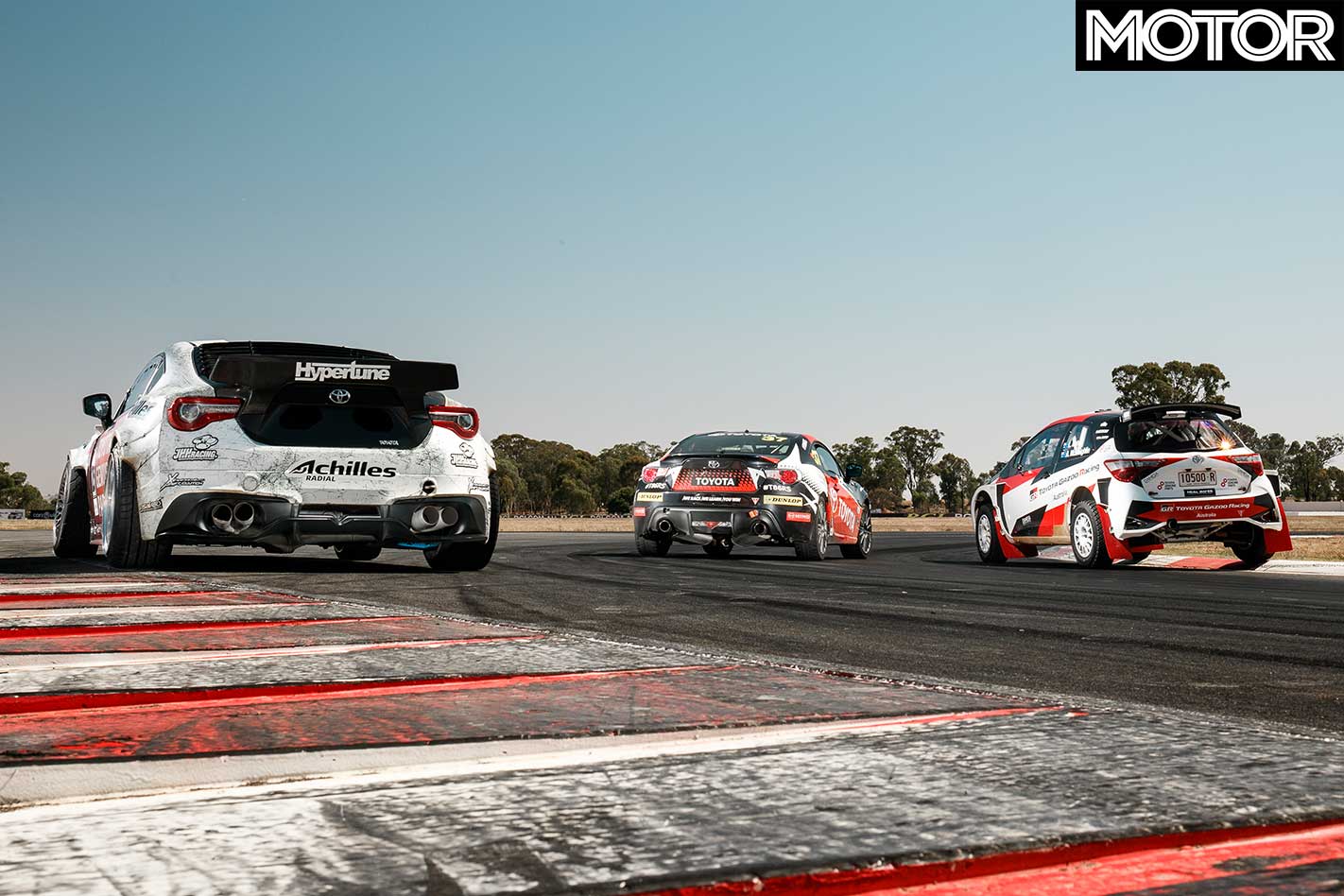
| u00a0 | Toyota 86 Drift Car | Toyota 86 Racing Series | Toyota Yaris AP4 |
| Body | 2-door, 2-seat coupe | 3-door, 2-seat hatch | |
| Drive | rear-wheel | all-wheel | |
| Engine | 2997cc inline-6, DOHC, 24v, turbo | 1998cc boxer-4, DOHC, 16v | 1613cc inline-4cyl, DOHC, 16v, turbo |
| Power | 537rwkW @ 8200rpm | 169kW @ 7000rpm (approx) | 224kW |
| Torque | 1000rwNm @ 3200rpm | 236Nm @ 6400-6800rpm (est) | 420Nm |
| Power/Weight | 471rwkW/tonne | 132kW/tonne | 182kW/tonne |
| Transmission | 6-speed sequential manual | 6-speed manual | 6-speed sequential manual |
| Weight | 1140kg | 1285kg (including driver) | 1230kg (dry) |
| Suspension (f) | coilover strut | coilover strut, anti-roll bar | struts, coil springs, anti-roll bar |
| Suspension (r) | A-arms, coilover strut | A-arms, coilover strut, anti-roll bar | struts, coil springs, anti-roll bar |
| Steering | hydraulically assisted rack-and-pinion | electrically assisted rack-and-pinion | hydraulically assisted rack-and-pinion |
| Brakes (f) | 355mm ventilated disc, 6-piston caliper | 330mm ventilated discs, 4-piston calipers | 300mm ventilated/slotted discs, 4-piston calipers |
| Brakes (r) | 345mm ventilated disc, 4-piston caliper | 316mm ventilated discs, 2-piston calipers | 300mm ventilated/slotted discs, 4-piston calipers |
| Wheels | 18.0 x 9.0-inch (f); 18.0 x 11.0-inch (r) | 18.0 x 8.0-inch (f/r) | 15.0 x 7.0-inch (f/r) |
| Tyres | Achilles 123S; 235/40 R18 (f), 265/35 R18 (r) | Dunlop Direzza DZIII86; 225/40 R18 (f/r) | MRF rally tyres; 205/65 R15 (f/r) |
| Price | $180,000-plus | $45,000 (used, approx); $75,000 (new) | $250,000 (approx) |

